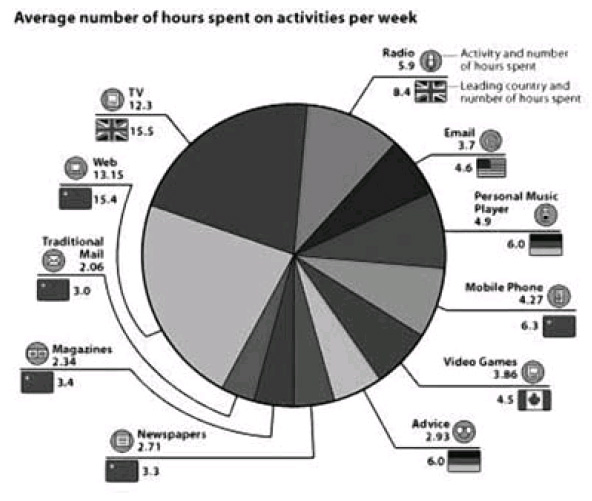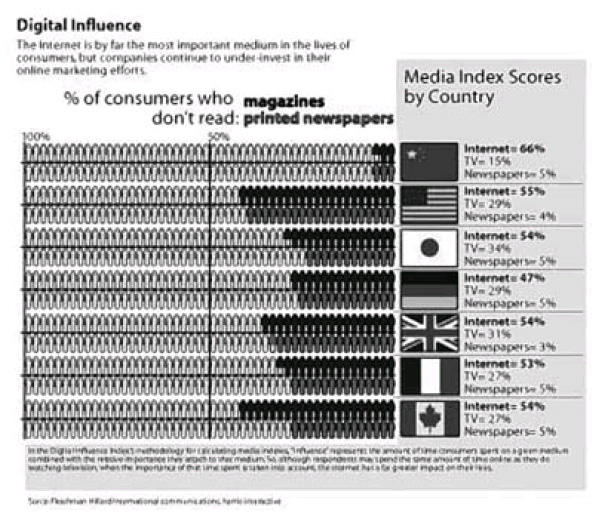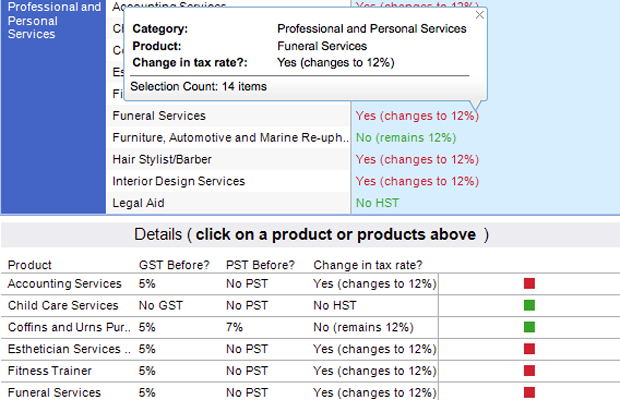Jon Swartz
USA Today

“Ideas are a dime a dozen,” Sandisk CEO Eli Harari says. “It’s what you do with a great idea, to create big markets, that matters.” – Sandisk
LOS ANGELES — At 43, Eli Harari was at a career crossroads — some might argue, nadir.
He was freshly ousted from Waferscale Integration, the computer-memory start-up he’d founded three years earlier, after a dispute with the board over strategy and direction. “It was an unmitigated disaster. I was an also-ran,” says Harari, now 65.
That’s hardly the self-assessment you’d expect from a CEO who nurtured his next start-up —SanDisk— into a $3.6 billion enterprise whose storage devices are used in thousands of products from iPods to digital cameras and smartphones. Along the way, he helped redefine an entire product category — flash memory — that fomented the digital photography revolution.
On a cool June morning here, he’s introduced as one of the most successful executives in the world at The Israel Conference. Harari is a featured speaker at the conference, which brings together American companies looking for sources of technological innovation and Israeli companies looking for partnerships and greater knowledge of global markets.
“Now, as always, is the best of times to start your company,” Harari tells the audience. Highlighting his point, he explains what is inscribed on SanDisk’s business plan. It’s a quote from Jewish religious leader Hillel: “And if not now, when?”
Harari used his disappointing experience at Waferscale as entrepreneurial fuel, striking out on his own with SanDisk and creating the multibillion-dollar flash-memory industry from scratch. He has navigated recessions and reinvented the company repeatedly during his 22-year tenure. The Israeli immigrant is a prototypical Silicon Valley pioneer, combining expertise in physics, marketing moxie and persistence. What sets him apart is his unassuming nature.
“It’s amazing what you can achieve if you don’t mind that somebody else gets the credit,” he says.
Harari is one of a handful of people in Silicon Valley still in charge of the company they founded. He declined to comment on his long-term plans at SanDisk, but he says constant change has kept him at the company since Ronald Reagan was president.
“As a physicist, I love (the concept) that the pace of change is accelerating — often exponentially,” he says.
“I think I’m probably the least-stressed person here,” he says. “Not because I’m a slave driver, but because I want balance in my life.”
Harari has thrived in a cutthroat industry while more-famous peers pursued other goals, such as the California governorship (former eBay CEO Meg Whitman) and philanthropy (former Microsoft CEO Bill Gates); were jettisoned (Sun CEO Jonathan Schwartz); or had extended hiatuses (Apple CEO Steve Jobs).
“He’s low-key, a gentleman,” says Randhir Thakur, a former SanDisk executive who is now at Applied Materials. “Eli is comfortable in his own skin.”
Humble origins
Exhibit A of Harari’s tireless persistence is SanDisk, which he helped nurse from a 2,000-square-foot office in Santa Clara, Calif., to a global operation of 3,300 employees in eight countries.
Last year, SanDisk was tops in the flash-memory-card market, with $2.8 billion in revenue, good for 37% market share, according to market researcher Gartner. Toshiba was second, with $1 billion, or 14%. (Samsung had 38% market share for the larger-flash-memory market, compared with SanDisk’s 34%, according to investment bank Deutsche Bank.)
Harari’s contributions to technology — he holds more than 100 U.S. and international patents in non-volatile semiconductor devices — landed him a job at Intel. But Intel’s tepid interest in flash prompted Harari to start Waferscale and, three years later, SanDisk. (Waferscale was sold to semiconductor company STMicroelectronics in 2000.)
He’s also a tinkerer who has dabbled in prototypes for new fishing rods, flea collars and screwdrivers. If not for his wife, Britt, Eli says, he might have ended up pursuing the next pocket fisherman gadget instead of SanDisk.
“Ideas are a dime a dozen,” Harari says, repeating a favorite line of his. “It’s what you do with a great idea, to create big markets, that matters.”
Harari’s greatest inspiration — for the founding of SanDisk in 1988 — was hatched with Sanjay Mehrotra, a former Intel colleague of Harari’s, and Jack Yuan, a Hughes Microelectronics veteran.
The trio struck upon the idea during meetings in Silicon Valley over several months. But when they came up with the notion of new flash-memory chips as a small, rugged, low-power alternative to hard disk drives, some investors balked.
Still, with early funding from venture capitalists, AT&T and Western Digital, SanDisk developed its first 4-megabyte flash chips and outbid Intel and Texas Instruments to nab IBM as its first customer. By 1995, SanDisk was working with Kodak, Polaroid and Canon to develop specifications for a succession of removable flash-card standards.
SanDisk has survived five economic downturns and steadily grabbed market share.
“We thrive on chaos,” Harari says. “Mobile is the new wave, yet we started a team called emerging markets for mobile seven years ago.”
Harari’s conviction was underscored when he rejected rival Samsung’s $5.85 billion hostile takeover bid in 2008 as too low, prompting flak from SanDisk shareholders. “He believed flash has huge potential, and he was determined to see his vision through,” says Kevin Cassidy, an analyst at investment bank Thomas Weisel.
‘Extended family’
Flash storage may be “disruptive technology” — as Harari likes to say — but one would be hard-pressed to find a more accommodating CEO. Possessing a warm smile, Harari is SanDisk’s kindly uncle, engendering fierce loyalty. “Our motto is ‘Be nice,’ ” the soft-spoken Harari says. “But we never, ever give up.”
“The company is his extended family. He loves it, and you see it,” says SanDisk general counsel Jim Brelsford, noting the company’s low turnover rate, especially among engineers.
At an all-hands meeting in late April, Harari hugged and slapped the backs of employees celebrating 10-, 15- and 20-year anniversaries. “If you are doing well, Eli will hug you,” Thakur says.
Such compassion showed after Brelsford’s college-age niece, Christa Brelsford, was severely injured during the Haitian earthquake. (She is now recuperating.)
Harari, who was overseas on an important business trip, saw a TV report on Brelsford — whom he had never met — and wrote her a heartfelt note.
The family vibe was on further display this month at SanDisk’s 11th annual international day, a food-and-music festival that celebrates the heritage of its workers, who hail from 36 countries.
Sometimes, the loyalty runs too deep. Harari shakes his head recalling a recent hospital visit to see a longtime engineer battling a brain tumor. The engineer wanted a laptop in order to do some work, which Harari quickly scotched.
“It blew me away,” Harari says.
While “most guys are over the hill” at his age, as Harari jokes, he’s driven by anticipating the future. Sort of like a Hall of Fame hockey player who had an uncanny ability to anticipate the flow of a game.
“We do what Wayne Gretzsky used to do: We skate to a spot before the puck gets there,” he says.
In a 1999 presentation to investors, Harari accurately predicted that the market for flash memory would be as big as that for hard disk drives. “I was convinced the mobile market was the (computing) platform for the coming decade,” he says now.
The prediction looks good today. Total flash sales were roughly $20 billion last year, and industry analysts are forecasting more than 30% annual growth over the next few years, says the Semiconductor Industry Association. Sales of hard disk drives, by comparison, were $30 billion in 2009 but are growing just 10% annually.
Thinking in the air
Harari, who does a fair bit of traveling to SanDisk’s operations worldwide, does most of his best thinking on overseas flights. On such excursions, he’s conjured new flash-memory-cell architecture and production innovations, Mehrotra says.
“He is a believer in his vision, his principles,” says Harari’s longtime friend, Levy Gerzberg, CEO of Zoran, a developer of chips for DVD players and cameras. “He never gives up and is not afraid to take risks,” he says. “You have to, to become an industry leader.”
Gerzberg, who founded Zoran in 1983, has known Harari as long as anyone: 30 years. They met when Gerzberg was doing research at Stanford in the integrated-circuit laboratory. Harari was working at Hughes at the time.
They have much in common. Both were born in Israel in 1945 and moved to the U.S. to complete their academic studies. Doting grandfathers, they frequently travel to their homeland on business, where they share laughs and reflect on “how we grew from nothing to (building multimillion-dollar) companies,” Gerzberg says.
“You never know what life will deal you,” he says.





